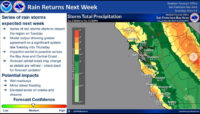In July of 2017 ruling on a lawsuit filed by River Watch and attorney Jerry Bernhaut, a judge rejected Sonoma County Climate Action Plan (CAP) for reducing greenhouse gases. Here’s his update.
The primary basis for the lawsuit was that the accounting method used in the CAP grossly under counted greenhouse gas emissions (GHG) from road, air and sea travel beyond county borders and nearby regional destinations generated in the course of the global export of wine and other local products, and travel to and from local tourist venues. This means millions of metric tons of GHG emissions, which would not have occurred but for the issuing of permits for hotels, event centers, vineyards and wineries, were simply not counted.
Since the judge issued her ruling, the Regional Climate Protection Authority and the County have completely disregarded her findings. They have repeatedly referred to the lawsuit as “unproductive” and have never responded in a substantive manner to the grounds for the judge’s ruling.
The County has recently proposed a resolution, adopted by the Supervisors, which updates the County’s GHG Inventory and recommits the RCPA to policy goals to reduce greenhouse gas emissions. The stated intent of the resolution is to “achieve the same policy impetus behind climate action as would have the Climate Action 2020 Plan, notwithstanding the setback from the lawsuit.”
But he RCPA once again refuses to include emissions from trans-boundary travel. This is a fiction which can only be maintained by excluding the thousands of tons of GHG emissions from 7.5 million tourists per year and billions of dollars in wine exports.
Each local community must take responsibility for its decisions that permit and enable activity that results in emissions that contribute to global warming. Each community must account for the environmental costs of its land use decisions. So far, Sonoma County elected officials have showed no inclination to take that responsibility, despite the decision of an experienced, highly respected superior court judge overturning the CAP.
Currently the Sonoma Valley Climate Coalition (SVCC) is working to achieve further implementation of GHG reduction measures. One of the challenges is that many of the GHG reduction measures in the CAP are framed in overly broad, vague language which makes it difficult to identify specific actions. For example, what exactly is involved in “identify specific areas for transit oriented development”, “incentivize solar energy installation” “Undertake actions that will support transit oriented land use” “traffic calming”?
Despite the vagueness challenge, the SVCC is making some progress in advocating for specific actions to reduce GHG emissions by city councils and other agencies. The SVCC is a group of smart, committed people. Meeting with this group gives me some reason to feel encouraged. I urge anyone looking for a way to engage in working for a liveable climate to join us. We meet the fourth Thursday of every month, 7 p.m. at Burlingame Hall, 252 West Spain St., Sonoma.
My fundamental concern continues to be that without a true accounting of the GHG emissions generated by activities in the County, we have no way of knowing with any reliable accuracy, the current level of the County’s GHG emissions, or how effectively implementation of GHG reduction measures is moving us towards future GHG reduction goals. As long as the RCPA and the County continue to “cook the books” by excluding emissions from trans-boundary travel in the County’s GHG Inventory, we are laboring under a significant information gap.
The resistance to taking the step to account for the true carbon footprint of our local economy is obviously due to the implications for the need to place serious limits on growth in tourism and wine production.
For me as an attorney, next steps include bringing lawsuits against applications for individual projects which will result in high GHG emissions not accounted for in an EIR. A prime example is the withdrawn draft EIR for the proposed Sonoma Hotel, which had an obviously inadequate traffic analysis and did not in any manner account for GHG emissions from long distance travel beyond City or County borders to the hotel.
I had hoped that prevailing in the lawsuit would motivate the County and RCPA to adopt a protocol, widely recognized, that includes trans-boundary emissions. They have demonstrated that when there is a conflict between commercial profit and protection of public health and the environment, profit rules. It will take more lawsuits to change public policy.






Be First to Comment